Affiliate disclosure: This post may contain affiliate links. Please see our Privacy Policy.
While most vegetables prefer full sun, fluffy soils and all-around pampering, there are a number of crops that grow just fine in the shade. As a general rule, crops that produce fruit, like tomatoes, need full sun to invest in their crops. Other leafy vegetables don’t have to invest their energy into producing fruit can grow just fine in shade.
Root crops are also a good option. Instead of producing many fruits throughout the season, they can slowly accumulate energy into one big harvest.
But with every rule, there are exceptions. Some varieties of fruit-producing vegetables have adapted to growing in shade. Certain types of green beans, for example, can grow in part shade behind corn plants in a 3 sisters garden. In that case, it’s all about choosing the right variety.
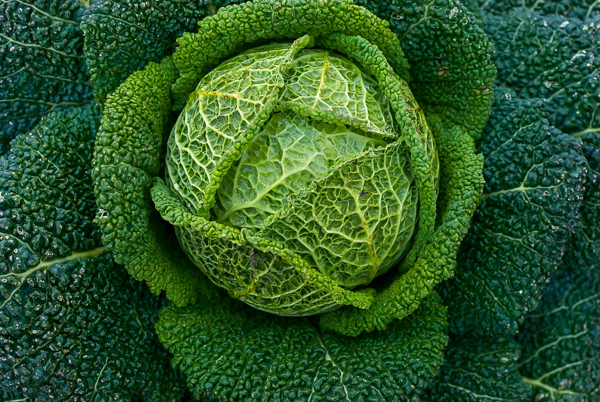
What counts as shade?
Shade is a bit relative. Some spots are shaded all day, while others catch a few passing rays as the sun goes by. Even areas that are in “full sun” can vary, as day length can be a bit short in northern latitudes (like up here in Vermont).
- Full Sun – Actually means less sun than you might think. The definition of “full sun” is at least 6 hours of direct sunlight. It doesn’t need to be continuous, and in fact, many vegetables benefit from a little shade in the afternoon heat. Growing up in California, I actually had to shade my bell peppers with shade cloth directly overhead or the fruits would develop papery “burned” spots on the sun side. Even in a fenced backyard in suburbia, you might have spaces with at least 6 hours.
- Partial Sun/ Partial Shade – Sources vary, but most people consider part sun or part shade to mean somewhere between 3 and 6 hours of direct sun per day. Generally, any plant listed as “part shade” will appreciate relief from the heat of the afternoon sun mid-summer.
- Dappled Sun – This often happens directly under trees that don’t have complete canopies. There’s never a time when the sun is directly shining on the ground, but it’s also not completely shady. Many crops have evolved to grow under dappled shade. Woodland Ramps (wild leeks) actually can’t handle anything more than dappled shade without burning, and you can cultivate those right in your backyard.
- Full Shade – Even in “full shade” there’s still some sunlight coming through. Full shade does not mean actual darkness, but it can mean little to no direct sunlight all day. Garden beds against solid wooden fences or near large shade trees are often in full shade. Anything less than 3 hours of sunlight per day counts as full shade.
Advantages of Growing Vegetables in Shade
While crops may grow slower in the shade, they’ll often have more flavor. Greens, for example, grow quickly in full sun and often blow right past “ready for harvest” and into “bolted and bitter” before you can harvest. Slowing down the season with a little shade actually helps them develop more flavor and limits bitterness.
Spring green crops, like peas or arugula, can be grown for a longer season if they have a little shade to protect them when things heat up. That means that you can harvest them for a longer season.
Shade Tolerant Greens
- arugula
- bok choi
- chard
- endive
- mesclun
- mustard
- sorrel
- spinach
- tatsoi
- watercress
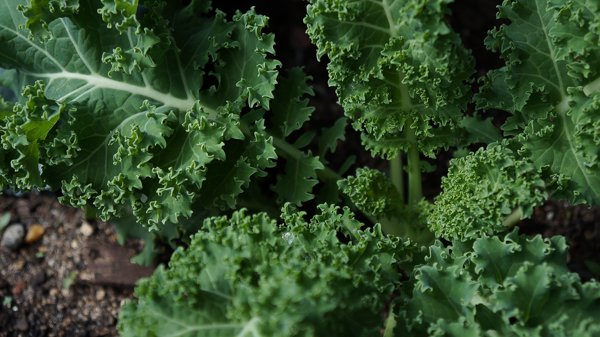
Shade Tolerant Root Crops
- beets
- carrots
- garlic
- horseradish
- leeks
- parsnips
- radishes
- rutabagas
- scallion
- turnips
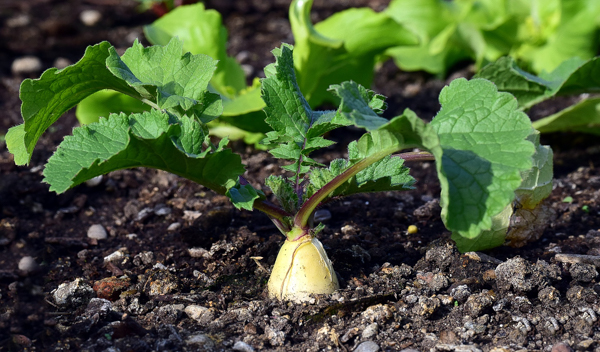
Shade Tolerant Vegetables
- asparagus
- broccoli
- Brussel sprouts
- cabbage
- cauliflower
- celery
- Chinese cabbage
- kohlrabi
- peas
- potatoes
- rhubarb
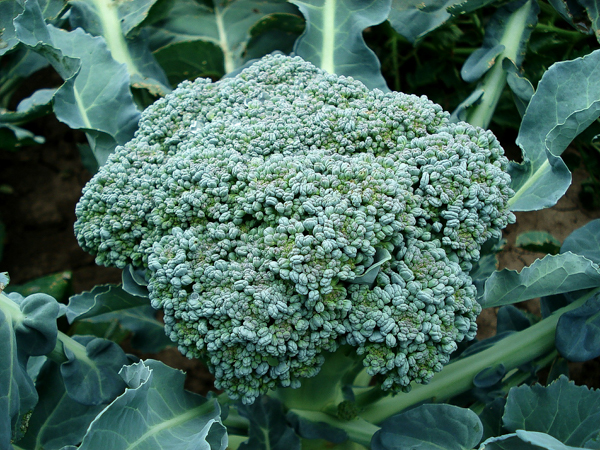
Shade Tolerant Varieties of Sun Loving Vegetables
While greens and root crops generally tolerate shade and even thrive in shade, other types of vegetables often have specific varieties that are adapted for shade. While I was reading The Resilient Gardener, I learned that most varieties of pole beans actually won’t tolerate being grown in a three sisters plot with corn and squash. The corn provides too much shade and the beans never develop.
The author, Carol Deppe, did trials and found that even though “it’s often said that most beans are shade tolerant…That’s is true if what you want is vines, not beans. Most bean varieties don’t flower very prolifically in shade.”
Still, she did find that old varieties, called cornfield beans, do best in shade. They grow larger leaves, sometimes as much as a foot across, to gather every stray sunray. Carol grows a shade-loving variety called ‘Withner White Cornfield Bean’ that will produce in the center of a dense corn patch.
Some varieties of tomatoes can also tolerate a bit of shade. Choose an early maturing variety, ideally less than 70 days. Since shade-grown crops take longer to mature, these early varieties will mature fast enough to get in a crop before the first frost.
According to Carol Deppe, Amish Paste and Black Krim are good part shade tomato varieties. Bush tomato varieties and patio hybrids are also good choices.
Here’s where you can find a full list of shade-tolerant tomato varieties, along with tips for growing them.
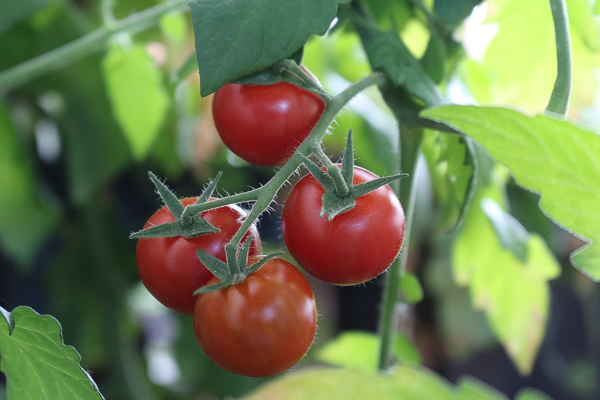
Tips for Growing Vegetables in Shade
- Choose Shade Tolerant Crops – Stick with varieties that can handle shade. While you may want tomatoes and zucchini, don’t try growing those in shade.
- Use Containers – If you have limited full sun, try planting full sun vegetables in containers in your sunniest spot, so you can move them as the sun changes throughout the season.
- Plant more – Shade generally means slower growth and lower yields. That’s fine if you’re patient, and plant enough to account for the slower growth.
- Start Seeds Indoors – Since they’re going to take longer to develop, you can get a head start on the growing season by starting indoors.
- Amend the soil – You’re already challenging the vegetables by growing them with lowered sunlight, so don’t make it doubly hard on them by growing them in pour soil. Make sure to add plenty of compost and organic matter.
- Watch for snails – Shady areas are great places for snails to thrive. Try setting up a few simple organic snail traps, like a little bit of beer in a cup or pie pan. Snails love a good ale as much as anybody, and once in they can’t get out.
- Increase Light Penetration – Could you trim a branch or move a picnic table to give you just a bit more sun?
- Plant Near Sun Reflective Surfaces – White painted fences or sun reflecting sidewalks can actually help plants nearby.





Great article. I have recently moved into an apartment in NC and I desperately want some tomato plants on my patio. However, it appears that the sun rarely makes it all the way to my space back there. I’m missing it by inches! I want to use containers but they’ll be really heavy to move. Do you think I’ll have any success? Any suggestions? I can’t paint the outside of my apartment building white. Lol! Any particular varieties you’d recommend?
Wow home run article. Great information thanks for all the work you do.
Love your website. Love your emails. Thank-you! I especially like your comments on differences between places like California and Vermont because that helps us in the middle to adjust our plans. Love your wild food tips too!!! I appreciate you so much! Do you know if the giant acorns are edible. I found a bunch from pretty short trees by an Olive Garden. We painted some and decorated for Christmas. Now I’m wondering if they are edible. They are absolutely giant, like the size of a plum. I once ate a dessert made with acorn crust and it was the best crust I’ve eaten in my life.
To the best of my knowledge, all acorns are edible if properly processed and leached of tannins.
I’m so glad you’re enjoying the site =)
So these lists are good for full shade too? I have a lovely two level deck where I would like to put railing planters and have fresh veggies right outside the door. Part of the deck is completely shaded all day. The rest is part to full sun.
Another question, do you know if geraniums or carnations would bother vegetables?
It really depends. In the deep south, I know people that grow tomatoes in full shade cause it’s just so darn hot and the days are long. Up here in VT, you’d probably need at least partial sun to grow anything. For full shade, your best options are leafy veg, like lettuce and herbs. Good luck!
I used to put out saucers of stale beer for slugs; never caught any but the saucers were always dry the next morning. Seems my dog as a drinking problem. Good article.